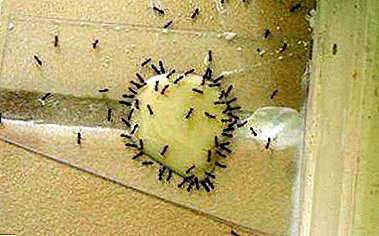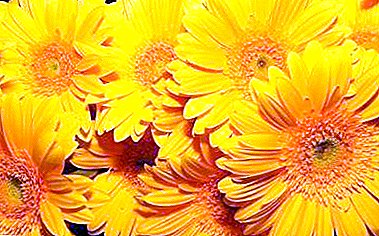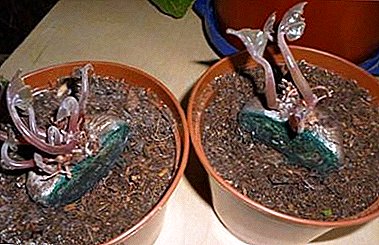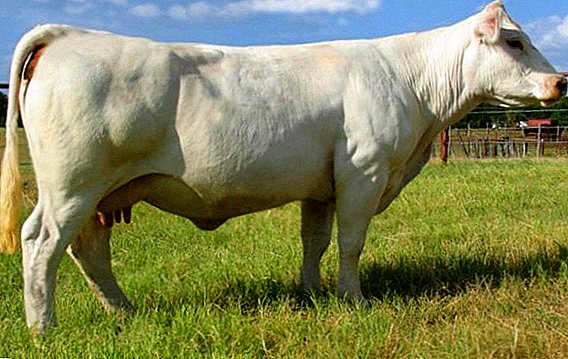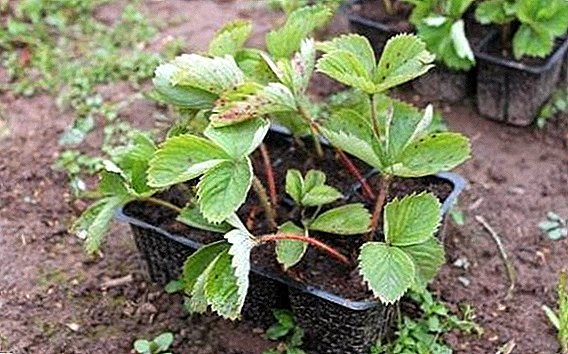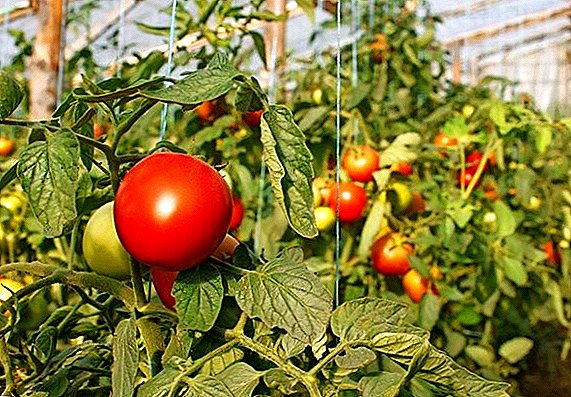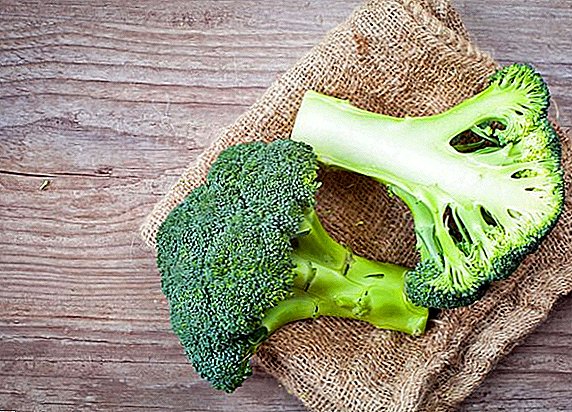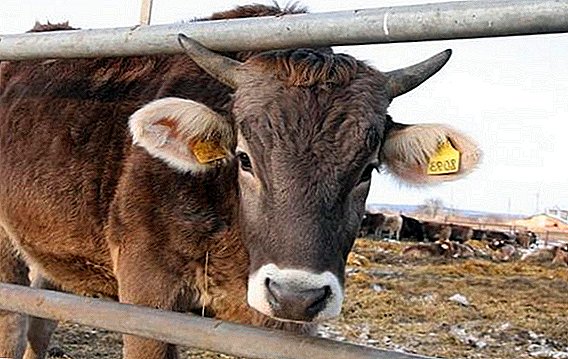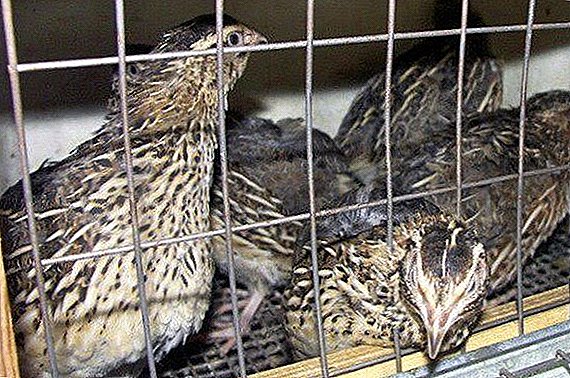 Quails are birds that are not prone to the manifestation of any form of aggression in the wild, but in conditions of bondage, for certain reasons, they can begin to harm their comrades. In this article we will discuss in more detail the probable causes of the emergence of such behavior, as well as possible ways to solve this problem.
Quails are birds that are not prone to the manifestation of any form of aggression in the wild, but in conditions of bondage, for certain reasons, they can begin to harm their comrades. In this article we will discuss in more detail the probable causes of the emergence of such behavior, as well as possible ways to solve this problem.
Why quail peck each other
Among the reasons leading to this behavior, there are several groups associated with the violation of the conditions of these birds, as well as one natural reason, which consists in the natural process of fighting males for territory and females, which often manifests itself especially acutely in the conditions of lack of the latter. Below, we will analyze each of the reasons given in more detail and suggest possible ways to solve the problems underlying the quail quaking each other.
Did you know? Quail eggs practically do not deteriorate and can be stored at a temperature close to room temperature, due to the presence in them of lysozyme - a substance with natural antibacterial properties.
Landing density
Like any other bird, especially the steppe, quails are characterized by the need to have their personal territory in which they search for food, as well as build nests and brood offspring in pairs. Naturally, if the elementary landing rules are not observed, these birds may begin to show excessive excitement and peck their neighbors in the cage. At the same time low density of landing goes to these birds exclusively for the benefit.  The content of quail in the cage When seeding quails, the following golden rule should be observed:
The content of quail in the cage When seeding quails, the following golden rule should be observed:
- in the case of planting in large cages and premises, there should be from 80 to 120 individuals per square meter;
- When seated in small cages, it must be remembered that each bird should not have less than 130 centimeters of square area.
In general, it is recommended not to contain in one standard cage, 90x40 cm in size, more than 25-30 quails.
Read about how to make a cage for quails with your own hands.
Unbalanced nutrition
As a result of the constant lack of protein components in the food they feed, and also due to the lack of certain mineral components (mainly calcium) in the diet and insufficient menu in terms of volume, birds can also begin to show aggression towards each other. A good proof that the problem lies precisely in the diet is the presence of changes in the appearance of the birds. (loss of feathers, irritation of the skin, changes in the structure of the skeleton, etc.).  Quail baldness An adequate solution to this problem is a set of measures to identify the missing component of the diet and the subsequent inclusion of a sufficient amount of it in the diet:
Quail baldness An adequate solution to this problem is a set of measures to identify the missing component of the diet and the subsequent inclusion of a sufficient amount of it in the diet:
- For example, if there is a lack of protein foods, you must increase the amount of corn and legumes in the feed, or start feeding some fish or meat waste to the birds.
- If you think that the reason is in small volumes of feed, you just need to increase its quantity (normally, each bird should have at least 30-35 g of feed).
Important! In order to prevent the development of the problem of sticking due to calcium deficiency, it is necessary to constantly pour small pebbles, shells, chalk and limestone into the feed for birds. You can also use vitamin and mineral supplements from a veterinary pharmacy.
Bad light mode
Another probable group of reasons for the emergence of the problem of raskleva quail their relatives are a variety of flaws in the organization of daylight birds. This is especially true in the winter, in conditions of lack of natural lighting. Normal daylight hours for a healthy quail are 12-14 hours, depending on age and specific species. Here are the main reasons for the appearance of rasklevy associated with violations of daylight hours:
Here are the main reasons for the appearance of rasklevy associated with violations of daylight hours:
- too sharp, frequent and jerky turning on the light (especially after dark);
- constant flickering of light bulbs as a result of temperature drops;
- lack of ultraviolet rays;
- too short or opposite, too long total daylight hours;
- setting cells too close to natural and artificial light sources;
- use of bulbs with too high or low voltage indicators to ensure daylight hours (a bulb with a voltage of 40-60 W is recommended).
The only correct and adequate solution to this problem is the timely identification of the true cause and its subsequent elimination. In general, the main recommendation regarding the establishment of light for any house containing inside these birds is to lay good wiring and ensure adequate daylight using certain equipment (light bulbs, soft switches, dimmers, etc.). .).
Learn about common quail diseases and how to treat them.
Drafts or lack of ventilation
Quails react rather painfully to the presence of any wind and drafts. The loud sounds that accompany drastic wind gusts in drafts frighten little birds, and they may begin to harm their neighbors in the cage due to excessive stress resulting from too frequent repetitions of such episodes. In addition, excessive drafts have a rather bad effect on the health of the birds, which makes them rather irritable and, again, peck at their fellows.  It is also possible that a cage with quails stands in a room completely devoid of all kinds of vents. In this case, the main reason for the appearance of flares is the lack of oxygen, as well as the complete absence of air movement in the room, which also provokes irritability and excessive stress in birds that are used to light steppe winds.
It is also possible that a cage with quails stands in a room completely devoid of all kinds of vents. In this case, the main reason for the appearance of flares is the lack of oxygen, as well as the complete absence of air movement in the room, which also provokes irritability and excessive stress in birds that are used to light steppe winds.
Did you know? At one time, mankind has attempted to tame wild quails, but they did not respond well to domestication. Therefore, the man had to display new types of quails, of which there are now more than a dozen.
After establishing such a reason for the appearance of rasklevy need to address the various blemishes in the ventilation system:

- First of all, it is necessary to properly seal the room from a variety of drafts, tightly curtain the windows with a cloth or a thick layer of polyethylene, as well as capping all the cracks.
- Next, it is worth checking the presence of special air vents and the presence of traction in them, and, in the case of their absence or incorrect operation, carry out appropriate repair work.
Remember that air must be drawn inward, not blown out of the ventilation.
Fight for leadership
Just as in the wild, there should be 4-5 females for each male quail in captivity. However, due to the fact that under the conditions of their natural habitat, all females with nests are located at sufficiently large distances from each other and practically do not overlap with each other - conflicts between males in the wild are quite rare. It is present in the cage, albeit relatively comfortable for the birds, but still a rather pronounced lack of natural space.
You will probably be interested to know how to keep quail in the winter and whether it is possible to keep quail together with the chickens.
As a result of the presence of such a deficit, males, especially young ones, that only recently caged by old quails that have already taken root with each other, can begin to show aggression towards each other. It is also very often possible to develop a situation in which males compete due to an insufficient number of females in a cage, as a result of which quails cannot fully satisfy their sexual instinct.  The solution to this problem is to maintain the correct proportion between females and males (for each male there are 4-5 females), ensuring the proper amount of personal space for each bird, equal at least to such an area that each bird finds a place at the feeder during the meal. Recall that the minimum area for adequate maintenance of quails should not be less than 130 centimeters square for each bird.
The solution to this problem is to maintain the correct proportion between females and males (for each male there are 4-5 females), ensuring the proper amount of personal space for each bird, equal at least to such an area that each bird finds a place at the feeder during the meal. Recall that the minimum area for adequate maintenance of quails should not be less than 130 centimeters square for each bird.
In addition, in the process of forming cells containing inside young quails, it would be best to place young males together, rather than plant them in cells with already formed families. So, each of the young males in the worst case will be forced to fight against all the other males from the cage equally, and not face the coordinated, directed against him the actions of quails that already know each other.
It is useful to find out how many eggs a quail carries per day and what egg production depends on.
How to treat a wounded bird
First of all, remember that as soon as you notice the presence of a crust on any of your birds, you must immediately remove the injured individual in a separate cage.  Such isolation will allow to achieve a significant advantage in treatment, increase the chances of a successful recovery and prevent further possible attacks from aggressive neighbors.
Such isolation will allow to achieve a significant advantage in treatment, increase the chances of a successful recovery and prevent further possible attacks from aggressive neighbors.
Important! Insulations also need to betray young, too aggressive quails, necessarily along with 4-5 females During the week-two, he will get used to his "ladies" and stop attacking his neighbors in the cage. Then it can be planted together with his family in a common cell.
Most often, quails peck each other’s torso and legs, because it is easiest to hit the first, and the legs are the most vulnerable, weakly protected and painful place to strike. It is necessary to treat a wounded bird in several stages. First of all, decide on how long the wound you noticed was inflicted, and whether it was not complicated by any bacterial inflammation.
If the injury is complicated, which can be understood by the presence of pus, abscesses, fever and localized redness - wash it with antibiotic solutions, such as penicillin or Vetbitsinna. In especially severe cases, it is recommended to also enter these antibiotics intramuscularly in the dosages indicated in the instructions. After the symptoms of an infectious disease subside, further treatment is carried out in the same way as with uncomplicated wounds.  If the wounds are not too old and do not have signs of purulent inflammation, then all treatment can be reduced to their primary washing with hydrogen peroxide and subsequent treatment with a non-greasy ointment with a healing effect, for example, Vishnevsky ointment or Levomekol. These manipulations are designed to prevent various pathogens that can cause complications from entering the body and the wound surface.
If the wounds are not too old and do not have signs of purulent inflammation, then all treatment can be reduced to their primary washing with hydrogen peroxide and subsequent treatment with a non-greasy ointment with a healing effect, for example, Vishnevsky ointment or Levomekol. These manipulations are designed to prevent various pathogens that can cause complications from entering the body and the wound surface.
Learn more about the breeding patterns of Texas, Estonian and Chinese painted quail.
The cage containing the injured birds must be cleaned every day, in order to maintain hygienically concomitant conditions. After the wounds are fully tightened, you can begin the process of re-integration of the nested bird in the cage.
Preventive measures
The main measure that prevents the appearance of raklevy quail each other, is the exact and scrupulous observance of all established hygienic and sanitary standards for the cultivation and maintenance of these birds. In addition, the presence of a complete, balanced diet with a special emphasis on protein components (especially in winter periods), and the presence of proper supplements also plays a rather important role.
It is also important to keep in mind the somewhat heightened temper of young males of this species, and also to observe all the recommendations for preserving life and shaping the environment of such young. Do not forget about the special susceptibility of quails to various stress factors in the form of strong drafts, the complete absence of air movement, too bright or dim light, or frequent and abrupt changes in its parameters.  And one of the most effective, giving almost one hundred percent guarantee for the absence of problems pecking quail each other, is the seating of each individual family, consisting of 1 male and 4-5 females, in separate, sufficient cell size. This method, although it gives quite good results, is practically not used in practice, due to its low economic profitability, high bulkiness of the chicken house formed in this way and excessive labor intensity in its maintenance.
And one of the most effective, giving almost one hundred percent guarantee for the absence of problems pecking quail each other, is the seating of each individual family, consisting of 1 male and 4-5 females, in separate, sufficient cell size. This method, although it gives quite good results, is practically not used in practice, due to its low economic profitability, high bulkiness of the chicken house formed in this way and excessive labor intensity in its maintenance.
It is useful to know what the life expectancy of quail.
So, we hope that this article has helped you to understand the reasons for the emergence of the problem of the emergence of bows in quails, and also offered decent solutions to this situation. Remember that in especially severe cases only a veterinarian should provide assistance to a wounded animal, so do not hesitate to contact him for help if you are unable to cope with the problem yourself.


